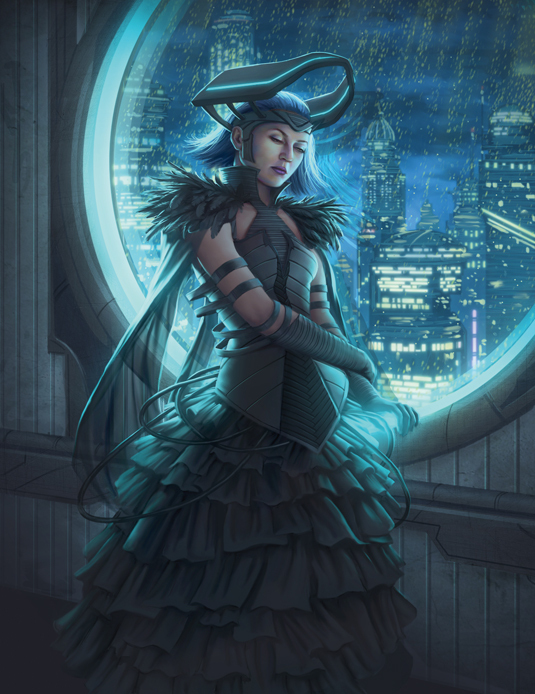
One of the most important aspects of any science fiction or fantasy painting is how everything has been designed. People love those genres because they offer a glimpse into other worlds, and when you take the time to design things such as clothing and architecture it enriches the whole experience.
It just so happens that designing clothing is one of my favourite parts of the artistic process, so these are steps I go through fairly often.
Before drawing anything, of course, you need to know the world you’re working in. Is it a grim future? An idealistic one? Has technology augmented reality to the point where everything is automated, or has society crumbled upon itself and now the plasma dome is all that stands betweenus and a pulsing, radioactive sky?
Watch the full tutorial
These are the sort of things you need to know before exploring how the citizens of Futuretown 20XX ought to dress.
For something as specific as a single gown, though, we need to understand the person we’re tailoring for, as well as the world in general.
The key is to try out a lot of different thumbnails, getting out as many ideas as you can and continually checking them against the overall theme.
01. Assess the character
Is your character rich, middle class, poor? Artistic? Reserved? Overtly sexual? Just like in the real world, how a person dresses can tell you a lot about their story. Create a list of adjectives you would like to see conveyed in your final design, and keep them in mind as you draw. Doing this will help you find your way when you come to forks in the road.
02. Shape it out
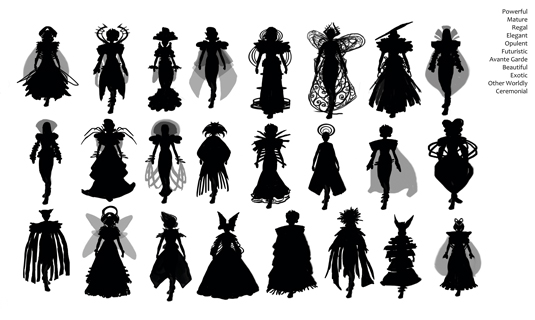
I start with a base silhouette and draw on top of it, only focusing on the outline. By keeping things simple, I can quickly experiment with a lot of different ideas. Often I’ll use the edge to indicate something specific such as a frilly skirt, but other times I’m just drawing in triangles to see what my brain creates from the abstract shapes.
03. Fill the details
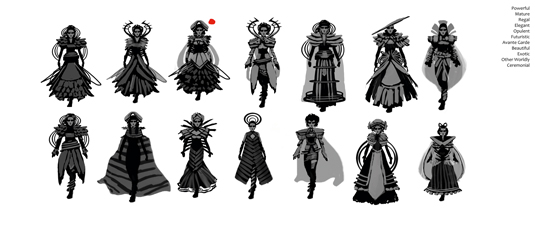
Once you have enough thumbnails that work, separate them from the rest and start adding in a second value. My usual approach is to create a new layer over the silhouettes and lock it so the outside edges remain true to the base. Let your mind fill in the details, always checking back in with your adjectives to make sure the concept is moving in the right direction.
04. Try some colour
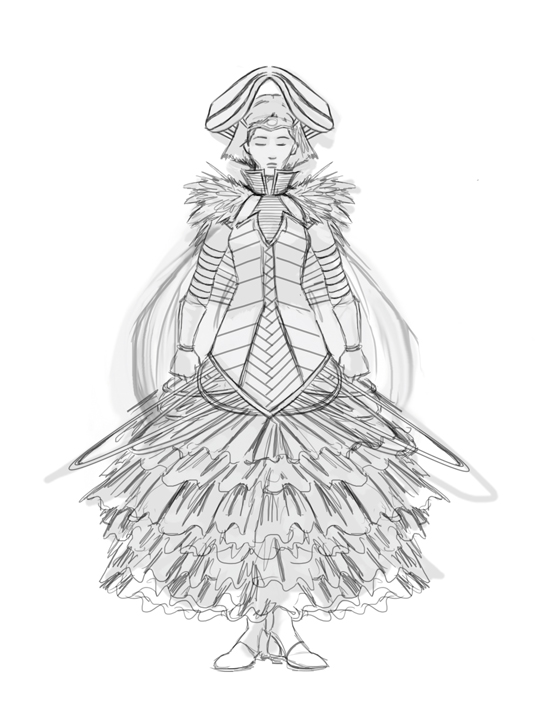
With the major shapes in the thumbnails defined, choose the one that best exemplifies the feeling you’re looking for. Separate and enlarge it, turn down the Opacity of the layer, create a new layer on top of it, then start sketching over the two-tone study. You can then try out different colours beneath the line work, although for this example the dress is black.
05. Familiarity breeds contempt
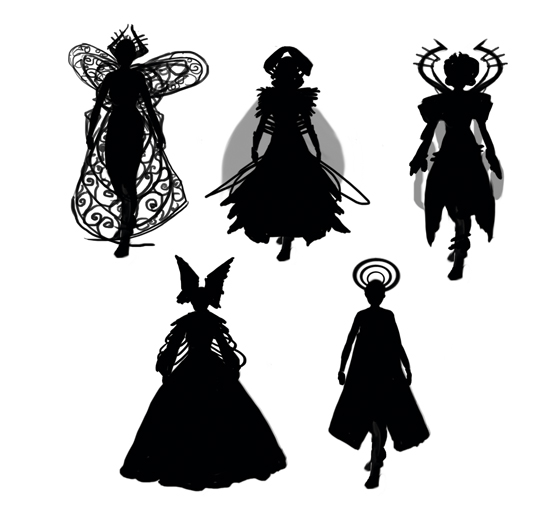
When designing something futuristic and avant-garde, the last thing you want is for the outfit to look like something you’d see on the street. Get outside of your comfort zone to create shapes that feel strange and unexpected.
This article originally appeared in ImagineFX magazine issue 113.
Like this? Read these!
- Free Photoshop brushes every creative must have
- How to paint a character frozen in ice
- How to promote your art online

Thank you for reading 5 articles this month* Join now for unlimited access
Enjoy your first month for just £1 / $1 / €1
*Read 5 free articles per month without a subscription

Join now for unlimited access
Try first month for just £1 / $1 / €1
Get the Creative Bloq Newsletter
Daily design news, reviews, how-tos and more, as picked by the editors.
